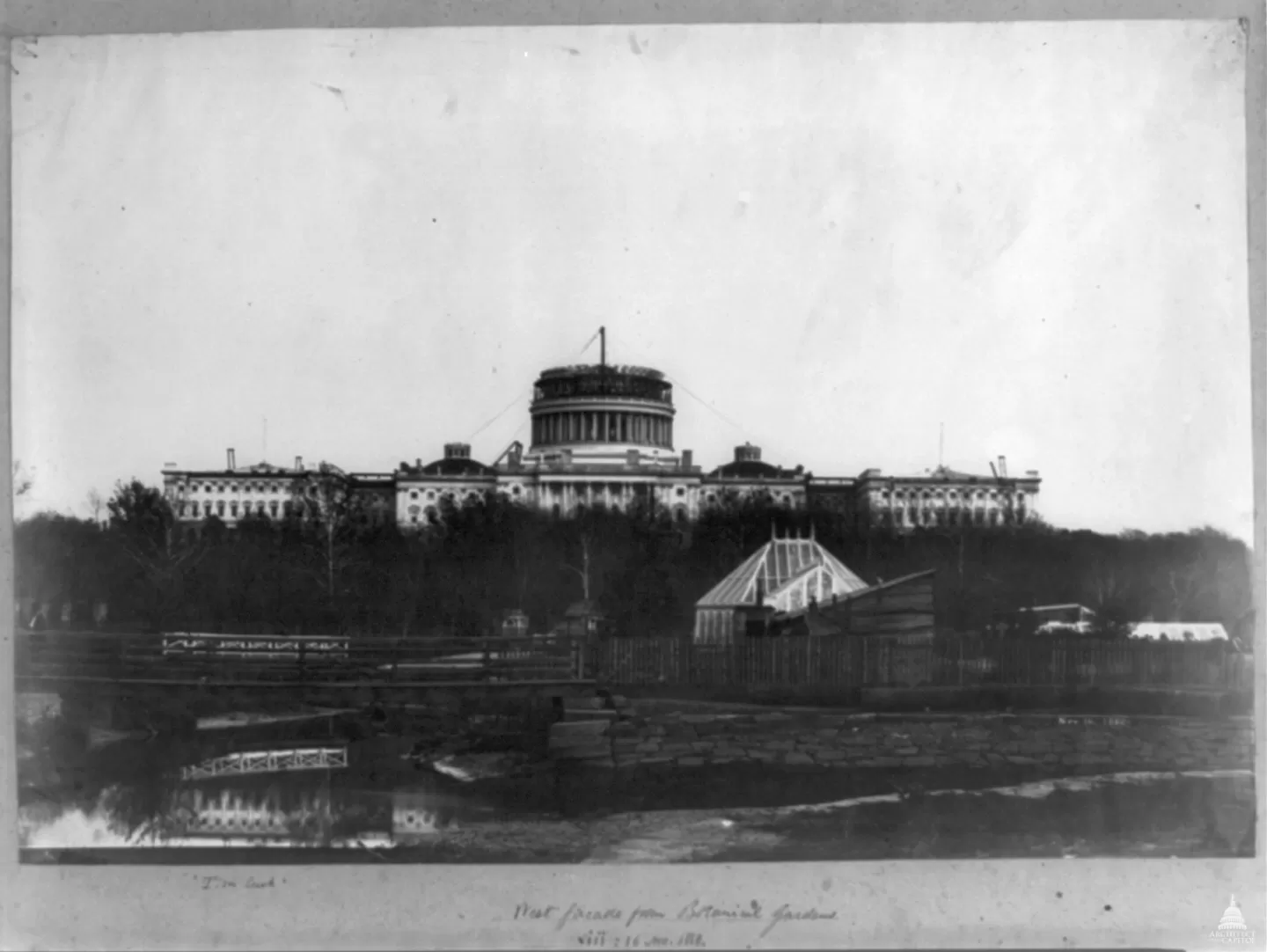The U.S. Capitol was built atop Jenkins' Hill, now often referred to as "Capitol Hill," in 1793. Since then many additional buildings have been constructed around this site to serve Congress and the Supreme Court.

In accordance with the "Residence Act" passed by Congress in 1790, President Washington in 1791 selected the area that is now the District of Columbia to serve as the nation's capital.
French engineer Pierre Charles L'Enfant was charged with planning the new city of Washington. He located the U.S. Capitol Building at the elevated east end of the National Mall, on the brow of what was then called Jenkins' Hill.
The site was, in L'Enfant's words, "a pedestal waiting for a monument." As the country grew so did Capitol Hill, with the construction of buildings housing the Congress, Supreme Court, Library of Congress and Botanic Garden.
The construction of the U.S. Capitol Building began in 1793, and for over a century it was the only building created for the use of the nation's legislature.
In fact, the Capitol initially housed not only the Congress but also the Library of Congress, the Supreme Court, the district courts and other offices. In the following decades the nation grew dramatically, and as a result, so did the Congress. The Capitol Building and its grounds were enlarged accordingly, and by 1892 the building had reached essentially its present size and appearance (with the exception of the east front extension [1958-1962] and courtyard infill areas [1991-1993]).
Despite the enlargement of the U.S. Capitol, the crowding inside soon became intolerable: in addition to the House and Senate, the building still housed the Library of Congress and the Supreme Court. In 1897 the Library departed the Capitol for its own separate building, which is today known as the Thomas Jefferson Building. This event was followed by the construction of the first separate buildings for the House and Senate. Like the Library of Congress building, these were first known by "generic" names: the House Office Building (now named the Cannon House Office Building) opened in 1908, and the Senate Office Building (now named the Russell Senate Office Building) opened the next year. They were provided with steam for heating (and, originally, electricity) by the new Capitol Power Plant, which became operational in 1910 and subsequently underwent several expansions.
The 1930s was a decade of major construction on Capitol Hill. In 1933 the U.S. Botanic Garden's conservatory, director's residence and Bartholdi Park were completed; the Senate Office Building's First Street wing, which had been omitted during construction for funding reasons, was added; and an additional House Office Building (later named the Longworth House Office Building) was occupied. The Supreme Court at last found a permanent home when its own building was completed in 1935. The last building constructed within the campus in the 1930s was the Library of Congress Annex, now named the John Adams Building, which opened in 1939.
Within 20 years attention returned to the need for more congressional office space; this led to the construction of a second building for the Senate (now named the Dirksen Senate Office Building), which was completed in 1958. The House's third building, the Rayburn House Office Building, opened in 1965. In the 1970s two more buildings became available for the House: the former Congressional Hotel (named the O'Neill Building; demolished in 2002) and a larger building originally constructed for the FBI (now the Ford Building). A third building for the Library of Congress, the James Madison Memorial Building, opened in 1980; the Senate's third building, the Hart Senate Office Building, was occupied in 1982. The Thurgood Marshall Federal Judiciary Building, which serves the Supreme Court, opened in 1992.
In 1989 the U.S. Botanic Garden's Production Facility, was constructed in the Anacostia neighborhood of Washington, D.C. In 2008, the last major addition to the Capitol was completed when the Capitol Visitor Center opened to the public.